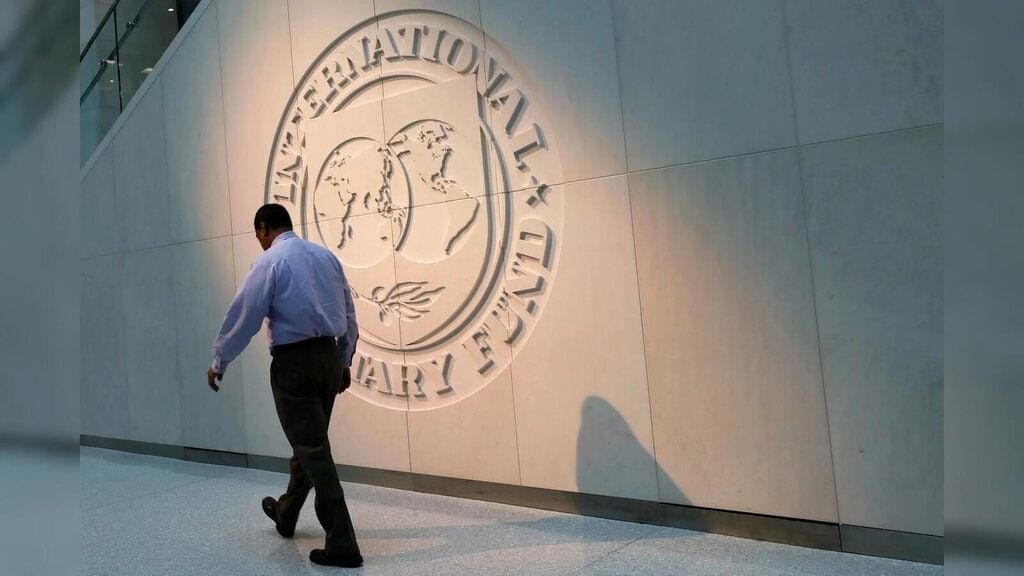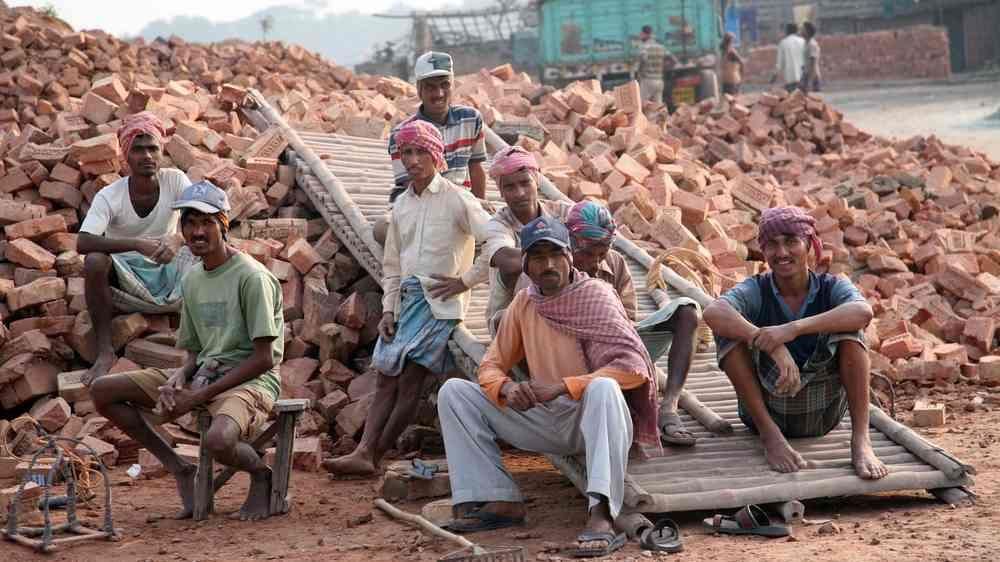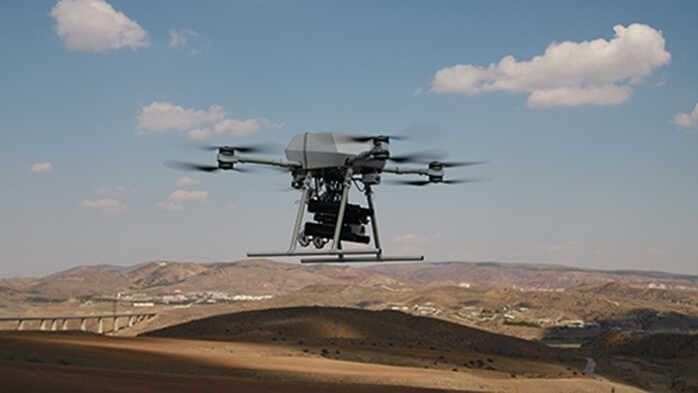UPSC Daily Current Affairs: 10th May 2025 | Current Affairs & Hindu Analysis: Daily, Weekly & Monthly PDF Download
GS2/International Relations
India Abstains from IMF Vote to Give More Funds to Pakistan
Source: The Hindu
 Why in News?
Why in News?India has expressed concerns at the International Monetary Fund (IMF) regarding the effectiveness of its financial assistance to Pakistan, highlighting the latter's poor track record in implementing reforms. Consequently, India chose to abstain from voting on the IMF's decision to disburse $1 billion under the $7 billion Extended Fund Facility (EFF) and an additional $1.3 billion under the Resilience and Sustainability Facility (RSF). India emphasized the need for the IMF to adhere to procedural and technical norms in its operations.
Key Takeaways
- India's abstention reflects its strong dissent regarding financial assistance to Pakistan.
- The IMF's voting system allows only "yes" or abstention votes, not formal opposition.
- Pakistan's history with the IMF includes frequent borrowing and poor reform implementation.
Additional Details
- Extended Fund Facility (EFF): A financial assistance program for countries with severe medium-term balance of payments issues, helping implement structural reforms with longer engagement periods.
- Eligibility: Available to all IMF member countries facing external financing needs, commonly accessed by advanced and emerging economies.
- Conditionality: Countries must commit to necessary structural reforms for disbursement, which is contingent on meeting performance criteria.
- Disbursement Process: Funds are released in phases following the IMF Executive Board's approval.
- Resilience and Sustainability Facility (RSF): Provides affordable financing to low-income and vulnerable middle-income countries, aimed at enhancing macroeconomic resilience and sustainability.
- Debt Sustainability Concerns: India's objection is rooted in Pakistan's unsustainable debt due to repeated bailouts, posing long-term risks for the IMF.
- Military Influence: India criticized the involvement of the Pakistani military in economic affairs, calling for greater transparency and accountability.
- Concerns Over Terrorism: India opposes funding a nation that supports cross-border terrorism, citing risks to international norms and the reputation of global institutions.
In summary, India's abstention during the IMF vote on financial assistance to Pakistan reflects its broader concerns about the effectiveness of such aid and the implications for regional stability and international financial norms.
GS3/Environment
It is Time to Protect India’s Workers from the Heat
Source: The Hindu
 Why in News?
Why in News?In early April 2025, Delhi's temperatures surpassed 41°C, indicating that extreme heat is becoming a persistent issue in Indian cities. This reality poses significant risks, particularly for urban informal workers who are highly exposed to the adverse effects of rising temperatures.
Key Takeaways
- Extreme heat is now a regular occurrence in India's urban environments.
- Informal workers, including construction laborers and street vendors, are disproportionately affected by heat stress.
- Current Heat Action Plans (HAPs) inadequately address the needs of informal workers.
- Global examples show effective strategies that could be adapted for use in India.
Additional Details
- Informal Workers: They are vital to India's urban economy but often lack representation in climate policy discussions.
- Heat Action Plans (HAPs): Many cities have these plans, yet they often fail to include specific protections for informal workers, treating heatwaves as temporary events rather than long-term crises.
- There is a need for better governance and coordination among various ministries to ensure that heat protection measures are effective and comprehensive.
- International practices, such as mandated rest breaks and hydration for outdoor workers in California and Oregon, demonstrate viable solutions that could be implemented in India.
Addressing the climate crisis for informal workers requires a paradigm shift in urban planning and governance. This includes recognizing their contributions and ensuring their rights are protected. A comprehensive urban heat strategy must integrate worker-specific protocols, community involvement, and sustainable infrastructure to mitigate the impact of rising temperatures.
GS3/Defence & Security
Songar Drones
Source: Times of India
 Why in News?
Why in News?Recently, Pakistan executed a significant drone incursion involving an estimated 300 to 400 Songar drones across 36 locations, ranging from Leh to Sir Creek. This action highlights the increasing utilization of drone technology in military operations.
Key Takeaways
- Songar drones are Turkey’s first indigenously developed armed unmanned aerial systems (UAS).
- These drones were first launched in April 2019 and officially integrated into the Turkish Armed Forces in February 2020.
Additional Details
- Technical Specifications:
- Rotor-to-rotor width: 140 cm
- Maximum take-off weight: 45 kg
- Flight duration: Up to 35 minutes without payload
- Operational range: Approximately 10 km
- Maximum altitude: 3,000 m above mean sea level, 300 m above ground level
- Equipped with dual cameras for navigation and targeting along with real-time video transmission.
- Navigation aided by GPS and GLONASS; includes an autonomous return-to-base function during communication loss.
- Weapon Configurations:
- Songar 5.56×45 mm Assault Rifle – uses standard NATO rounds with a recoil-dampening mechanism.
- Songar 2×40 mm Grenade Launcher – capable of firing two grenades up to 400-450 meters.
- Songar 6×40 mm Drum-type Grenade Launcher – fires six grenades in rapid succession.
- Songar 3×81 mm Mortar Gripper – designed for launching mortar shells.
- Songar 8×Tear/Smoke Grenade Launcher – delivers grenades via controlled free-fall, suitable for riot control or non-lethal missions.
- All variants include multi-layered safety protocols, necessitating operator authorization prior to firing.
This information underscores the strategic importance of Songar drones in modern military operations, particularly in the context of regional security dynamics.
GS3/Science and Technology
MADMAX: Advancements in Dark Photon Detection
Source: Science
Why in News?
The MADMAX collaboration has released its initial findings from the search for dark photons utilizing a prototype detector. This research is pivotal in exploring the elusive nature of dark matter, particularly axions.
Key Takeaways
- MADMAX stands for Magnetised Disk and Mirror Axion Experiment.
- The initiative aims to detect dark matter components, specifically axions.
- Dark photons are hypothesized particles similar to photons but possess mass.
- The first prototype run did not detect dark photon signals, but it achieved significant sensitivity improvements.
Additional Details
- MADMAX Detector: This system utilizes a stack of dielectric (sapphire) disks and a reflective mirror, creating a resonator that enhances the detection of dark photons.
- Dark Photons: These are theoretical particles thought to be part of galactic dark matter halos. They can potentially convert into regular photons under certain conditions, with the conversion frequency depending on the dark photon mass.
- Detection Mechanism: The core mechanism involves boosting the conversion of dark photons to microwave photons through parallel dielectric disks that improve conversion probabilities.
- The curved mirror focuses microwave signals into a horn antenna linked to a microwave receiver for signal processing.
- The MADMAX setup features resonators larger than the expected dark photon signal wavelengths, allowing detection at higher frequencies (~20 GHz).
- Resonance frequencies can be tuned by adjusting disk positions, which broadens the mass range coverage.
- Signal identification is based on detecting a distinct narrow peak in Fourier space that is distinguishable from thermal noise.
While the first prototype run did not yield detectable dark photon signals, it demonstrated successful functionality and sensitivity that is three orders of magnitude better than previous attempts. This run also explored a previously untested range of parameters in a single experiment, paving the way for future research in dark matter detection.
GS2/International Relations
Key Facts about Balochistan
Source: Times of India
Why in News?
The Balochistan Liberation Army (BLA) has claimed responsibility for capturing several strategic army posts in Balochistan, including the provincial capital, Quetta. This development is significant in the context of ongoing tensions in the region.
Key Takeaways
- Balochistan is primarily located in western Pakistan and extends into southeastern Iran.
- It is the traditional homeland of the Baloch people and is named after them.
- The province, which covers an area of 347,190 sq.km, is Pakistan's largest yet least populated province.
- Quetta is the capital of Balochistan.
Additional Details
- Ethnic Composition: The major ethnic groups in Balochistan include the Baloch and Pashtun peoples, with a significant third group of mixed ethnicity, primarily of Sindhi origin.
- Religious and Linguistic Aspects: Most residents practice Islam and communicate in languages from the Iranian branch of the Indo-Iranian language family, including Balochi, Brahui, Pashto, and Sindhi.
- The largest towns and trade centers in Balochistan are Quetta in Pakistan and Zahedan in Iran.
Balochistan has a rich history, having been ruled by various empires. It was conquered by Alexander the Great in 330 BC and subsequently held by the Arabs from the 7th to the 10th century. In the late 19th century, the British annexed most of the region, and following the end of British rule in 1947, much of Balochistan became part of Pakistan.
GS3/Economy
Credit Guarantee Scheme for Startups (CGSS)
Source: Financial Express
Why in News?
The Department for Promotion of Industry and Internal Trade (DPIIT), which operates under the Ministry of Commerce and Industry, has announced an expansion of the Credit Guarantee Scheme for Startups (CGSS).
Key Takeaways
- The CGSS was launched on October 6, 2022, as part of the Startup India Action Plan.
- This scheme provides collateral-free credit to eligible startups through recognized financial institutions.
- Credit guarantees cover loans from Scheduled Commercial Banks, All India Financial Institutions (AIFIs), Non-Banking Financial Companies (NBFCs), and SEBI-registered Alternative Investment Funds (AIFs).
Additional Details
- Types of Coverage: The scheme offers two formats of coverage: Transaction-based for individual borrowers and Umbrella-based for Venture Debt Funds.
- Funding Instruments: Startups can access various funding options including working capital, term loans, and venture debt.
- The scheme is overseen by the National Credit Guarantee Trustee Company Limited (NCGTC), with a Management Committee and a Risk Evaluation Committee constituted to ensure effective implementation.
- The program supports innovation, fosters early-stage entrepreneurship, and promotes economic self-reliance.
Key changes in the expanded CGSS include:
- The guarantee ceiling has been increased from ₹10 crore to ₹20 crore per borrower.
- Guarantee coverage has been enhanced to 85% for loans up to ₹20 crore and 75% for loans exceeding this amount.
- The Annual Guarantee Fee (AGF) has been reduced from 2% to 1% per annum for startups in 27 Champion Sectors identified under the ‘Make in India’ initiative to strengthen domestic manufacturing and services.
To assess your understanding, consider the following statements regarding India:
1. According to the ‘Micro, Small and Medium Enterprises Development (MSMED) Act, 2006’, the ‘medium enterprises’ are those with investments in plant and machinery between Rs. 15 crore and Rs. 25 crore.
2. All bank loans to the Micro, Small and Medium Enterprises qualify under the priority sector.
Which of the statements given above is/are correct?
- Options: (a) 1 only (b) 2 only* (c) Both 1 and 2 (d) Neither 1 nor 2
GS3/Science and Technology
What is Lupus?
Source: The Hindu
 Why in News?
Why in News?World Lupus Day is observed annually on May 10 to enhance public understanding of this complex autoimmune disease, which can have significant health implications for those affected.
Key Takeaways
- Lupus is an autoimmune disease where the immune system mistakenly attacks the body's own tissues and organs.
- The disease can affect various body systems, including joints, skin, kidneys, blood cells, brain, heart, and lungs.
Additional Details
- Causes: The exact cause of lupus remains unknown; however, it is believed to arise from a combination of genetic, hormonal, and environmental factors. Notably, it is more prevalent in women than in men.
- Types of Lupus:There are several forms of lupus, including:
- Systemic lupus erythematosus (SLE): The most common form, accounting for 70% of lupus cases, which can vary in severity and affect multiple body parts.
- Discoid lupus: This type manifests as a persistent red rash.
- Subacute cutaneous lupus: Characterized by sores that appear after sun exposure.
- Drug-induced lupus: Triggered by certain medications, this type typically resolves upon discontinuation of the drug.
- Neonatal lupus: A rare condition affecting newborns, likely caused by specific antibodies from the mother.
- Symptoms: Symptoms can vary widely and may include joint pain, headaches, rashes, fever, fatigue, mouth sores, confusion, swollen glands, and blood clots. Symptoms often occur during flare-ups, followed by periods of remission.
- Treatment: While there is currently no cure for lupus, various medications and lifestyle adjustments can help manage the disease effectively.
In summary, lupus is a multifaceted autoimmune disease that requires ongoing awareness and understanding. Through education and awareness initiatives like World Lupus Day, we can support those affected by this condition.
GS3/Economy
Pradhan Mantri Formalisation of Micro Food Processing Enterprises (PMFME) Scheme
Source: Times of India
Why in News?
Bihar has been recognized as the leading state in India for effectively implementing the Pradhan Mantri Formalisation of Micro Food Processing Enterprises (PMFME) scheme in the financial year 2024-25, as stated by the state's industries minister.
Key Takeaways
- The PMFME scheme was launched on June 29, 2020, by the Ministry of Food Processing Industries.
- It aims to support micro-enterprises in upgrading and formalizing their operations.
- The scheme has an outlay of ₹10,000 crores over a five-year period.
- Bihar has successfully assisted 200,000 micro food processing units under this scheme.
Additional Details
- Objectives:The key objectives of the PMFME scheme include:
- Enhancing access to credit for micro food processing entrepreneurs, FPOs, self-help groups, and cooperatives.
- Integrating these enterprises into organized supply chains through improved branding and marketing.
- Facilitating the transition of 200,000 existing enterprises into a formal framework.
- Providing access to common services, including processing facilities and training.
- Financial Support:
- Micro enterprises can receive a credit-linked subsidy of 35% of the eligible project cost, capped at ₹10 lakh.
- A minimum beneficiary contribution of 10% is required, with the remainder covered by loans.
- Support for FPOs/SHGs/Cooperatives:
- Seed capital of ₹4 lakh will be provided to self-help groups for working capital and tools.
- Common infrastructure projects can receive a credit-linked capital subsidy of 35%, up to ₹3 crore.
- Groups can also access grants for branding and marketing support.
- Eligible Borrowers:
- This includes Farmer Producer Organizations (FPOs), Self-Help Groups (SHGs), cooperatives, and existing micro food processing entrepreneurs.
- New units must adhere to the One District One Product (ODOP) guideline to receive support.
This scheme aims to strengthen the food processing sector by ensuring that micro enterprises have the resources and support necessary for growth and formalization, ultimately contributing to the economic development of the region.
GS3/Environment
Methane Emissions in the Energy Sector
Source: DTE
Why in News?
The International Energy Agency's (IEA) Global Methane Tracker 2025 has reported that methane emissions from the energy sector reached approximately 145 million tonnes (Mt) in 2024, with oil and gas facilities alone responsible for over 80 Mt.
Key Takeaways
- Methane is a potent greenhouse gas, contributing to about 30% of the global temperature rise since the Industrial Revolution.
- The atmospheric concentration of methane is now five times higher than in the preindustrial era and is increasing more rapidly than other greenhouse gases.
Additional Details
- Major Sources of Methane Emissions:The three primary anthropogenic sources are:
- Agriculture
- Waste sectors
- Fossil fuel extraction, including natural gas, coal, and bioenergy, which together account for over 35% of human-induced methane emissions.
- Breakdown of Emissions in the Energy Sector:
- Oil operations contributed around 45 Mt.
- Natural gas operations released nearly 35 Mt.
- Abandoned oil and gas wells emitted approximately 3 Mt.
- Coal activities added more than 40 Mt, including 4 Mt from abandoned mines.
- Bioenergy combustion, particularly in developing countries, contributed 18 Mt, mainly from traditional biomass like wood, dung, and charcoal.
- Methane Characteristics:
- Methane is a colourless, odourless, highly flammable gas, often referred to as marsh gas.
- It has a short atmospheric lifespan of approximately 10 years but has a Global Warming Potential (GWP) around 80 times that of CO₂ over 20 years.
- About 60% of atmospheric methane results from human activities, with the remainder from natural sources such as wetlands and permafrost thawing.
- Mitigation Potential: The IEA suggests that around 70% of fossil fuel methane emissions can be mitigated using existing technologies, and in the oil and gas sector, about 75% of emissions can be reduced by fixing leaks and plugging abandoned wells.
- Top Emitters:The leading emitters of methane from fossil fuel operations include:
- China
- USA
- Russia
- Iran
- Turkmenistan
- India
In summary, methane emissions from the energy sector remain critically high despite the availability of technologies to mitigate them. Addressing these emissions is essential for combating climate change and reducing global temperature rise.
GS2/International Relations
The Pakistan-Turkey Nexus
Source: Indian Express
Why in News?
India recently managed to thwart a significant drone attack orchestrated by Pakistan, which targeted 36 locations along the western border using over 300 drones. These drones are believed to be Turkish-made Asisguard Songar models. This incident has heightened concerns regarding Turkey's increasing military support for Pakistan, particularly in light of recent Turkish military activities in Karachi. Although Turkey has denied supplying arms, it remains Pakistan's strongest ally in West Asia and is the only nation to have condemned India's Operation Sindoor.
Key Takeaways
- Turkey's military support for Pakistan is on the rise.
- India has strengthened its ties with Saudi Arabia and the UAE, which have shown neutrality towards India on regional issues, including Kashmir.
Additional Details
- Turkey’s Interests in Pakistan: Turkey seeks to enhance its influence in the Muslim world, competing with Gulf powers.
- Pakistan’s Interests in Turkey: Pakistan benefits from military and diplomatic support, particularly concerning Kashmir.
- Historical and Ideological Bond: The relationship is rooted in a shared Islamic identity, dating back to Cold War alliances.
- High-Level Political Engagement: Turkish President Recep Tayyip Erdoğan has made multiple visits to Pakistan, emphasizing strong bilateral relations.
- Defence Cooperation: Turkey has become Pakistan's second-largest arms supplier, with significant acquisitions, including Bayraktar drones and Kemankes missiles.
The growing ties between Turkey and Pakistan pose strategic challenges for India, necessitating a balanced response to counteract this emerging nexus.
GS2/Polity
South Asia’s Declining Press Freedom: India’s Alarming Position
Source: The Hindu
 Why in News?
Why in News?Indian media has faced significant restrictions, described as being "shackled" and subjected to a systemic strategy aimed at crippling it, according to the 23rd Annual South Asia Press Freedom Report 2024-25.
Key Takeaways
- The state of press freedom in South Asia has significantly eroded over the past year.
- India's press freedom is highlighted as being under unprecedented threat.
- The report titled “Frontline Democracy: Media and Political Churn” indicates increasing restrictions and dangers for journalists.
Additional Details
- Legal Suppression of Media Freedom: The report indicates increased use of sedition laws, the Unlawful Activities (Prevention) Act (UAPA), and the Prevention of Money Laundering Act (PMLA) against media organizations and journalists.
- Frequent defamation lawsuits and state-sponsored raids on media houses using the Income Tax Department and Enforcement Directorate further threaten press freedom.
- Rise in Self-Censorship: Many media outlets have adopted a "chilling effect," avoiding critical reporting on the government to evade repercussions.
- Critical media outlets often face financial coercion through the withholding of government advertisements.
- Manipulation of Information: Political IT cells disseminate misinformation and hate speech, undermining independent journalism.
- India is noted as having the highest global risk for misinformation and disinformation as per the Global Risks Report 2024.
The report also outlines the status of press freedom in neighboring countries, noting severe challenges:
- Pakistan: Marked as the most violent year for journalists in two decades, with eight journalists killed and ongoing authoritarian control over media.
- Bangladesh: Transitioned from the ICT Act to the Cyber Security Act, with concerns about transparency and misuse, alongside nearly 300 reported attacks on journalists during protests.
- Afghanistan: Recorded at least 172 media rights violations under Taliban rule, indicating a continued assault on press freedom.
- Bhutan and Maldives: Bhutan’s press freedom ranking plummeted from 33rd in 2021 to 152nd in 2025, while Maldives faces regulatory challenges under its Information Commissioner’s Office.
Economic and structural challenges also persist:
- Shrinking Job Market: Media organizations across South Asia face layoffs, job insecurity, and declining advertisement revenue, impacting journalists' livelihoods.
- Impact of AI and Digital Media: There is an increasing reliance on AI for content creation, which is leading to declining professional journalism standards.
Despite these challenges, some reform efforts are underway:
- India's Proposed Media Transparency Bill 2024 seeks to regulate media monopolies and promote fair editorial practices.
- Bangladesh’s Interim Government has pledged to enhance public information access.
- Nepal’s media consolidation efforts are considered positive steps towards accountable public media.
However, the report warns that without stronger protections and less government interference, the decline in press freedom is likely to continue.
GS3/Environment
20th Session of UN Forum on Forests (UNFF20)
Source: CITES
Why in News?
India recently participated in the 20th session of the United Nations Forum on Forests (UNFF20), held at the UN Headquarters in New York. This event reaffirmed India's commitment to the United Nations Strategic Plan for Forests (UNSPF) for the period 2017–2030.
Key Takeaways
- The UNFF was established in 2000 by the UN Economic and Social Council (ECOSOC).
- Its primary goals include promoting sustainable forest management and coordinating global forest policy.
- Annual sessions alternate between technical discussions (odd years) and policy-level dialogues (even years).
- UNFF has universal membership, including all UN Member States and relevant forest-related agencies.
- India is a founding member and actively shapes forest policies.
- The UNSPF serves as a framework for achieving global forest goals by 2030.
Additional Details
- 19th UNFF Declaration: This declaration secured high-level political commitment for forest conservation.
- India's Commitment: At UNFF20, India reiterated its commitment to Voluntary National Contributions (VNCs) under the UNSPF, reporting a 25.17% increase in forest and tree cover.
- National Initiatives:
- Implementation of the Aravalli Green Wall project.
- 7.86% rise in mangrove cover.
- A total of 1.55 lakh hectares have been afforested under the Green India Mission.
- 1.4 billion seedlings planted through the campaign "Ek Ped Maa Ke Naam".
- India invited other countries to join the International Big Cat Alliance (IBCA) for big cat conservation.
- It emphasized support for the outcomes of the Country-Led Initiative (CLI) on forest fire management held in Dehradun in 2023.
- In a high-level panel, India presented findings on carbon sequestration, water services, biodiversity, and tools such as the System of Environmental Economic Accounting (SEEA) and the Millennium Ecosystem Assessment (MEA).
- India stressed the importance of mainstreaming ecosystem valuation.
In reference to the 'New York Declaration on Forests', the following statements are presented for evaluation:
With reference to the 'New York Declaration on Forests', which of the following statements are correct?
- 1. It was first endorsed at the United Nations Climate Summit in 2014.
- 2. It endorses a global timeline to end the loss of forests.
- 3. It is a legally binding international declaration.
- 4. It is endorsed by governments, big companies, and indigenous communities.
- 5. India was one of the signatories at its inception.
Select the correct answer using the code given below:
- Options: (a) 1, 2, and 4* (b) 1, 3, and 5 (c) 3 and 4 (d) 2 and 5
This summary encapsulates India's active role and commitments regarding global forest policies and initiatives.
|
44 videos|5271 docs|1113 tests
|
FAQs on UPSC Daily Current Affairs: 10th May 2025 - Current Affairs & Hindu Analysis: Daily, Weekly & Monthly
| 1. Why did India abstain from the IMF vote to give more funds to Pakistan? |  |
| 2. What are the implications of India's abstention from the IMF vote for its foreign relations? |  |
| 3. How does the issue of worker safety from heat relate to India's labor market? |  |
| 4. What are the key features of the Credit Guarantee Scheme for Startups (CGSS)? |  |
| 5. What is the significance of the Pradhan Mantri Formalisation of Micro Food Processing Enterprises (PMFME) Scheme? |  |
















